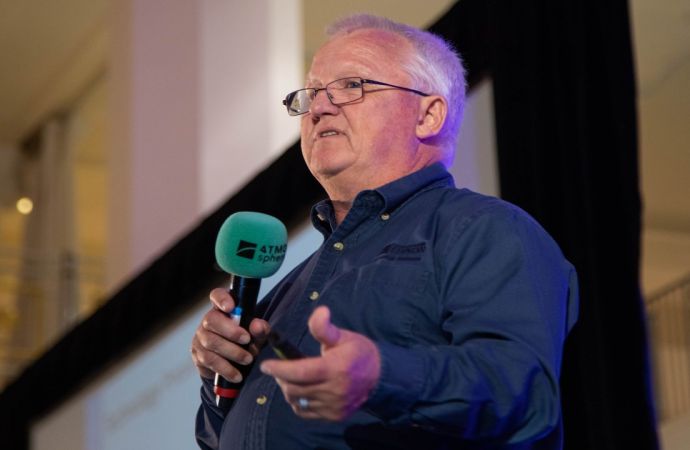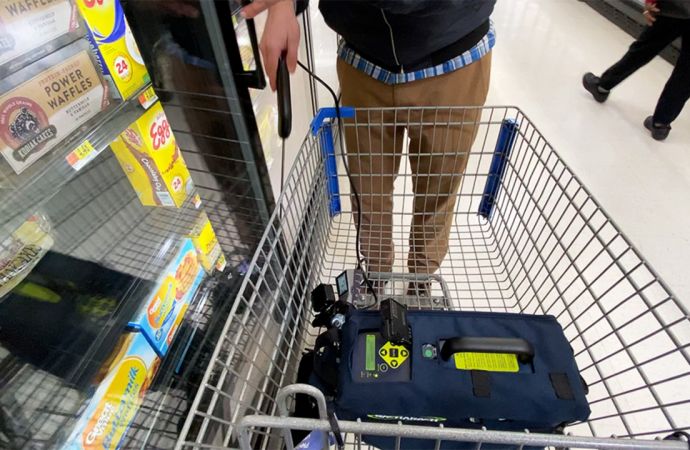Held on 23-26 March in Nashville, Tennessee, the IIAR 2014 Industrial Refrigeration Conference provided participants with an update on US policies affecting ammonia facilities. Presentations by Lowell Randal, IIAR’s Director of Government Affairs and Jeff Shapiro, President of International Code Consultants outlined several key issues and recent regulatory changes.

As part of global effort to eliminate HFCs, “the EPA has recently announced its schedule to phase out R22 at the latest by 2020, but there are some proposals that would accelerate that, maybe even up to 2018,” said Lowell Randall, IIAR’s Director of Government Affairs. “This could end up being an opportunity for expanded use of ammonia,” he added.
According to Randal, the Executive Order on Chemical Facility and Safety signed in August 2013 is currently getting a lot of attention in Washington and is a high priority for the Obama administration.
Executive Order to potentially impact legislation relevant to ammonia facilities
The Executive Order aims to improve operational coordination with state and local partners and foresees review of policies, regulations and standards, with potential changes to Process Safety Management and Risk Management programmes. As part of implementing the Executive Order, the Occupational Safety and Health Administration (OSHA) published a request for information on potential changes to Process Safety Management (PSM) regulations. Given that this influences many of the ammonia facilities, the IIAR developed a task force to draft a response in coalition with other organisations. The key proposed changes to the PSM include:
40% of inspections at ammonia facilities
Talking about another important OSHA programme, the National Emphasis Program (NEP) for chemical facilities, Lowell Randall pointed out that 40% of all NEP inspections are at ammonia facilities. While around 25% of these are programmed inspections, the higher percentage of inspections come from accidents, complaints or referrals. Among the top violations that OSHA inspectors are looking for are mechanical integrity, process safety information and process hazard analysis, Randall highlighted.
New rule to require public disclosure of injury records
Recently, OSHA released a proposal that would require electronic submissions of injury and illness recordkeeping that would be made publicly accessible. This would especially affect facilities (or whole companies) with over 250 employees that would be requested to submit the records every 3 months, while facilities with more than 20 employees in designated industries would have this obligation on an annual basis.
Complex and lengthy process of safety codes adoption
“Our objective with the regulatory affairs part of the IIAR is to make sure that modern codes and standards don’t unfairly burden natural refrigerants,” said Jeff Shapiro, President of International Code Consultants in his presentation. Unlike in other industrialised countries, safety codes are not written by a government agency, but model codes are prepared by non-profit associations and adopted afterwards by state and local jurisdictions, which sometimes amend them.
The safety codes are adopted in a process with a 3-year cycle, but as Shapiro explained some states are moving towards longer periods of 6 years, which means that the ability to integrate new technology in these codes is becoming more challenging.
Revised IIAR Standard 2 needs to be consistent with model safety codes
As there is an increasing tendency of safety codes to make a reference to the IIAR Standard 2 (Safety Standard for Equipment, Design, and Installation of Closed-Circuit Ammonia Mechanical Refrigeration Systems), it is necessary that the standard revision, which is currently ongoing, is consistent with model codes; otherwise they will not refer to it. Shapiro highlighted 3 areas in particular that need special attention in the course of the IIAR 2 rewrite:
According to Randal, the Executive Order on Chemical Facility and Safety signed in August 2013 is currently getting a lot of attention in Washington and is a high priority for the Obama administration.
Executive Order to potentially impact legislation relevant to ammonia facilities
The Executive Order aims to improve operational coordination with state and local partners and foresees review of policies, regulations and standards, with potential changes to Process Safety Management and Risk Management programmes. As part of implementing the Executive Order, the Occupational Safety and Health Administration (OSHA) published a request for information on potential changes to Process Safety Management (PSM) regulations. Given that this influences many of the ammonia facilities, the IIAR developed a task force to draft a response in coalition with other organisations. The key proposed changes to the PSM include:
- Adding new management system elements
- Definition and policies surrounding recognised and generally accepted good engineering practices
- Expanding the Mechanical Integrity element to include all safety critical equipment
- Expanding management of change
- Revising requirements on coordinating with first responders
- Requiring 3rd party audits
40% of inspections at ammonia facilities
Talking about another important OSHA programme, the National Emphasis Program (NEP) for chemical facilities, Lowell Randall pointed out that 40% of all NEP inspections are at ammonia facilities. While around 25% of these are programmed inspections, the higher percentage of inspections come from accidents, complaints or referrals. Among the top violations that OSHA inspectors are looking for are mechanical integrity, process safety information and process hazard analysis, Randall highlighted.
New rule to require public disclosure of injury records
Recently, OSHA released a proposal that would require electronic submissions of injury and illness recordkeeping that would be made publicly accessible. This would especially affect facilities (or whole companies) with over 250 employees that would be requested to submit the records every 3 months, while facilities with more than 20 employees in designated industries would have this obligation on an annual basis.
Complex and lengthy process of safety codes adoption
“Our objective with the regulatory affairs part of the IIAR is to make sure that modern codes and standards don’t unfairly burden natural refrigerants,” said Jeff Shapiro, President of International Code Consultants in his presentation. Unlike in other industrialised countries, safety codes are not written by a government agency, but model codes are prepared by non-profit associations and adopted afterwards by state and local jurisdictions, which sometimes amend them.
The safety codes are adopted in a process with a 3-year cycle, but as Shapiro explained some states are moving towards longer periods of 6 years, which means that the ability to integrate new technology in these codes is becoming more challenging.
If we were to start pushing CO2 into the code process today, realistically you are looking at not seeing those regulations adopted in some places for as long as 9 years from now,” Shapiro said. He explained that the 2015 model codes are close to being finalised and the process for 2018 codes will already begin in April 2014.
Revised IIAR Standard 2 needs to be consistent with model safety codes
As there is an increasing tendency of safety codes to make a reference to the IIAR Standard 2 (Safety Standard for Equipment, Design, and Installation of Closed-Circuit Ammonia Mechanical Refrigeration Systems), it is necessary that the standard revision, which is currently ongoing, is consistent with model codes; otherwise they will not refer to it. Shapiro highlighted 3 areas in particular that need special attention in the course of the IIAR 2 rewrite:
- Detection and alarm: Currently codes are very loose on this and leave it to the design engineer to decide on the location, number of detectors and other parameters.
- Machinery room ventilation: The 2015 codes have adopted the minimum required ventilation rate for ammonia of 30 air changes per hour. Changes to this rate in the IIAR 2 could make consistency with codes difficult.
- Equipment outside of machinery room (in process areas): At present the codes do not allow any ammonia refrigeration equipment to be placed outside of the machinery room.
MORE INFORMATION
Related stories



